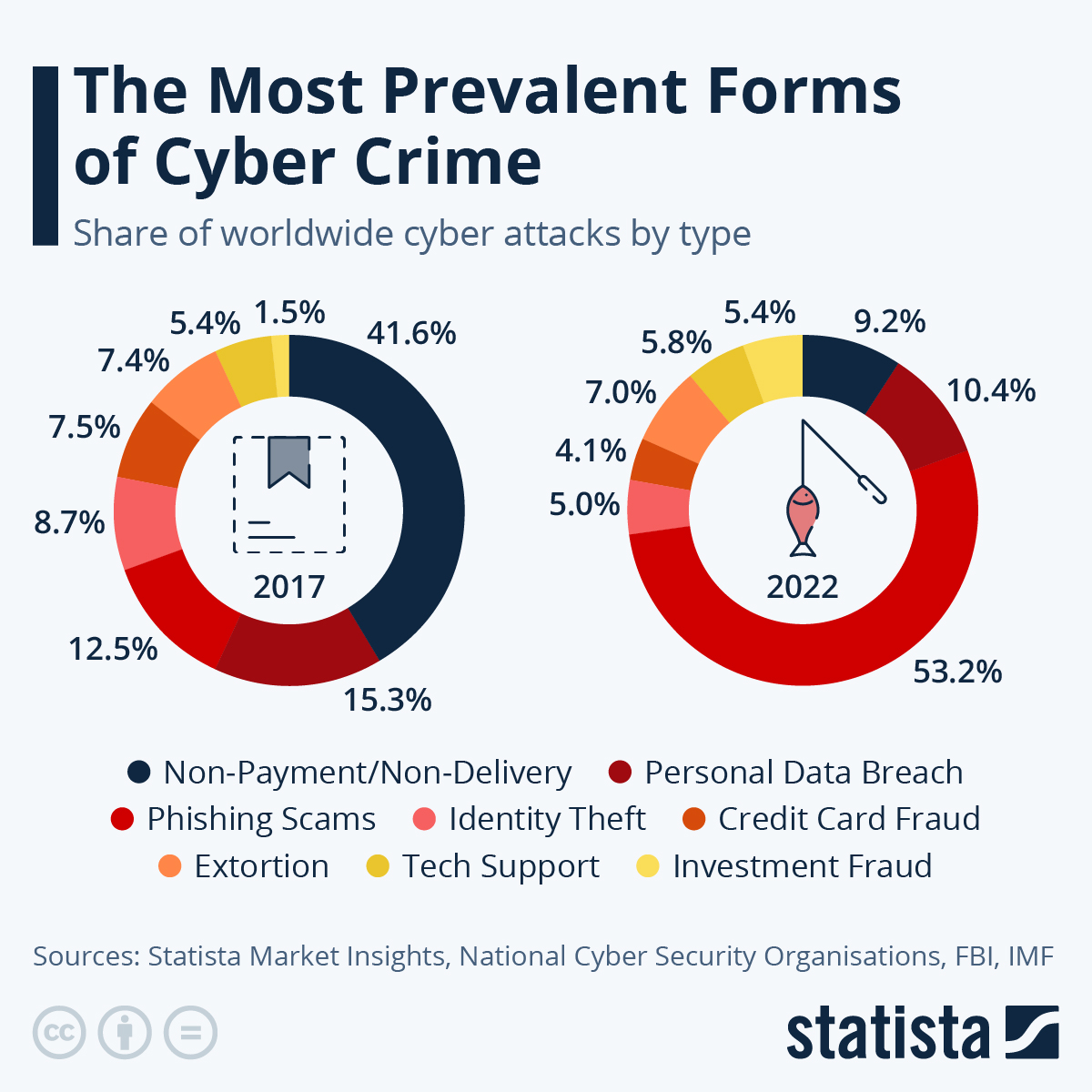In the dynamic world of digital security, 2023 was a landmark year that witnessed a significant surge in the scale and impact of cybersecurity breaches. This article aims to dissect these developments and project the implications for 2024, emphasizing the need for enhanced cybersecurity preparedness and resilience.
Record-High Data Breaches
2023 set a new record for the number and severity of data breaches, surpassing the previous high by 14% with over 733 total compromises affecting more than 66 million victims. These breaches spanned across industries, from corporate giants to public healthcare systems, leaving a trail of financial and emotional damage. Victims grappled with stolen credit card information, drained bank accounts, and damaged credit scores.
Noteworthy Incidents
Casino Operator Attacks: In a striking example, MGM and Caesars, two casino giants, suffered cyberattacks involving social engineering tactics. A teen hacker group, Scattered Spider, collaborated with the Russian ransomware gang Alphv, highlighting the evolving complexity and sophistication of cyber threats.
Microsoft Cloud Email Breach: This breach compromised the emails of U.S. government officials, revealing potential vulnerabilities in Microsoft’s Azure Active Directory security system.
Barracuda Email Security Gateway Attacks: Cybercriminals exploited a critical vulnerability in Barracuda’s Email Security Gateway, affecting around 5% of devices and targeting U.S. government agencies.

Cybersecurity Predictions for 2024: Emerging Threats and Trends
As we transition into 2024, it’s crucial to recognize and prepare for the evolving cybersecurity landscape. Here are key trends and predictions:
- Increase of Zero-Day Vulnerabilities in Extortion Attacks: Cybercriminals may increasingly exploit zero-day vulnerabilities to target multiple organizations simultaneously.
- Generative AI in Phishing: The use of generative AI to craft convincing phishing emails and impersonate high-level executives is expected to rise, making it harder to distinguish between legitimate and fraudulent communications.
- Adoption of Passwordless Authentication: Biometrics might replace traditional passwords as the primary authentication method in enterprises.
- Closer Collaboration in Cybersecurity Leadership: CEOs, CSOs, and CISOs are anticipated to work more closely together to optimize security budgets and manage risks effectively.
- Wider Use of Identity Verification: Enhanced identity verification methods will be critical in confirming the identities of employees, partners, and customers, especially in remote interactions.
- Proactive Security Tools and Technologies: Investment in proactive security tools for risk-based vulnerability management and attack surface management will become more prevalent.
- Increased Regulations for IoT Devices: With IoT adoption on the rise, there will likely be more regulatory scrutiny on security measures for connected devices.
- Third-Party Security Challenges: Securing third-party vendors will continue to be a significant concern, as vulnerabilities in their security can provide attackers access to larger networks
- Impact of Vendors on Cyber Insurance Policies: Cyber insurance carriers may scrutinize organizations’ security postures and technology vendors more closely, affecting policy terms and premiums.
In Conclusion
The data breaches of 2023 and the predictions for 2024 underline the urgency of fortifying cybersecurity defenses. Businesses and government agencies must prioritize cybersecurity preparedness and resilience. This involves staying abreast of emerging threats, investing in robust security infrastructure, and fostering a culture of security awareness and vigilance.
As the threatscape continues to evolve with new tactics like ransomware, phishing, and AI-driven attacks, the need for a proactive and adaptive approach to cybersecurity has never been more critical. The focus should be on not just defending against threats, but also preparing for the potential impacts of successful attacks, ensuring a swift and effective response to minimize damage.
In closing, 2024 is poised to be a year of significant challenges, but also opportunities for strengthening cybersecurity practices. By understanding the trends and adapting strategies accordingly, organizations can navigate these turbulent waters with greater confidence and resilience.
If your business or government agency needs a hand, reach out. We have over 25 years of experience putting our client’s security needs first.

